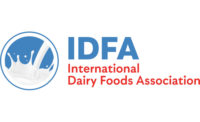COVID-19 and crisis planning: a learning experience
For the dairy segment, crisis management is about more than just keeping retail grocery shelves stocked.

While nearly seven in 10 business leaders say they have experienced at least one corporate crisis in the last five years (https://tinyurl.com/r6c6vgs), the coronavirus pandemic has put crisis management front and center for every business — large and small, in every industry and in every region of the country.
The federal government has acted in myriad ways and across a range of agencies to provide support (financial and otherwise), regulatory flexibility and industry guidance, but each of our businesses is reckoning with its own unique disruptions related to supply chains, transportation systems, workforce management and markets.
Commendable response
The U.S. dairy industry’s response to the coronavirus crisis has been outstanding. Dairy farmers, processors, truckers and grocers continue to show up to work, despite the challenges posed by COVID-19, to ensure fellow Americans have the fresh, wholesome and safe dairy products they rely on as part of a nutritious and healthy diet. Despite localized distribution and stocking issues that have arisen from time to time, retail dairy shelves — which have seen an eye-popping 60% increase in demand across all dairy products — have remained stocked throughout the pandemic.
But crisis management is about more than just keeping shelves stocked. It is about business continuity amidst the volatility. It is about ensuring employees are safe and productive, maintaining your reputation and mitigating losses that are beyond your control. It is about having a plan that provides a “map” and, therefore, direction to operate during a turbulent time, particularly during a crisis of such unprecedented proportions.
Differences in plans
To be clear, a crisis management plan is not the same as a risk management plan. The former involves assessing and managing threats before, during and after they have occurred, whereas the latter involves assessing potential threats (risks) and determining the best ways to avoid (or mitigate) those threats. The operative distinction is one of timing. A crisis management plan must include decision-making before, during and after the occurrence of the event.
Professor Venette with the School of Communication at the University of Southern Mississippi defines crisis as “a process of transformation where the old system can no longer be maintained.” A crisis has several characteristic features such as a threat (real or perceived) to important goals, an element of surprise, a high degree of uncertainty and short decision-making time. Combined, these characteristics create a very challenging environment.
A crisis plan can simplistically be broken down to three phases: pre-crisis, during crisis and post-crisis. Pre-crisis planning involves developing preparatory measures, conducting training (which, for example, can include conducting scenario planning) and forming communication approaches. It is during the crisis that you take the necessary actions laid out in your plan that will allow you to resolve threats to your business. Often overlooked post-crisis is taking the time and making the effort to evaluate how well you and your teams managed the crisis and to capture learnings to help improve your crisis plan.
Dairy food production is heavily impacted by supply and demand factors, weather, markets, consumer choices, a catastrophic event such as a pandemic and any other number of influences that can feel out of control for individual businesses. While the future is always uncertain, we can all agree that we will undoubtedly experience another crisis that rattles markets, destroys facilities or upends critical infrastructure to our supply chains.
Whether you’re planning for the next coronavirus, a cyberattack or a massive earthquake, the question is: What have you and your teams learned from the COVID-19 crisis and what have you incorporated into your crisis plan to help you to be better prepared for the next one?
Looking for a reprint of this article?
From high-res PDFs to custom plaques, order your copy today!





